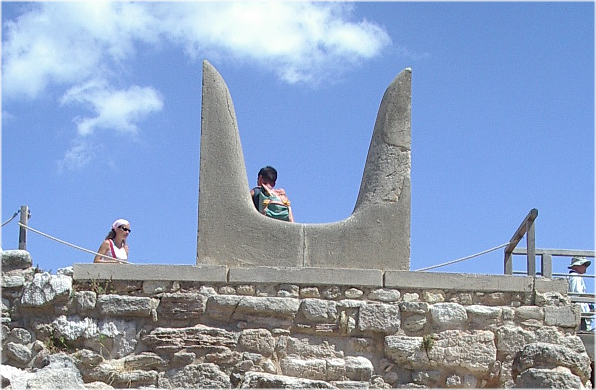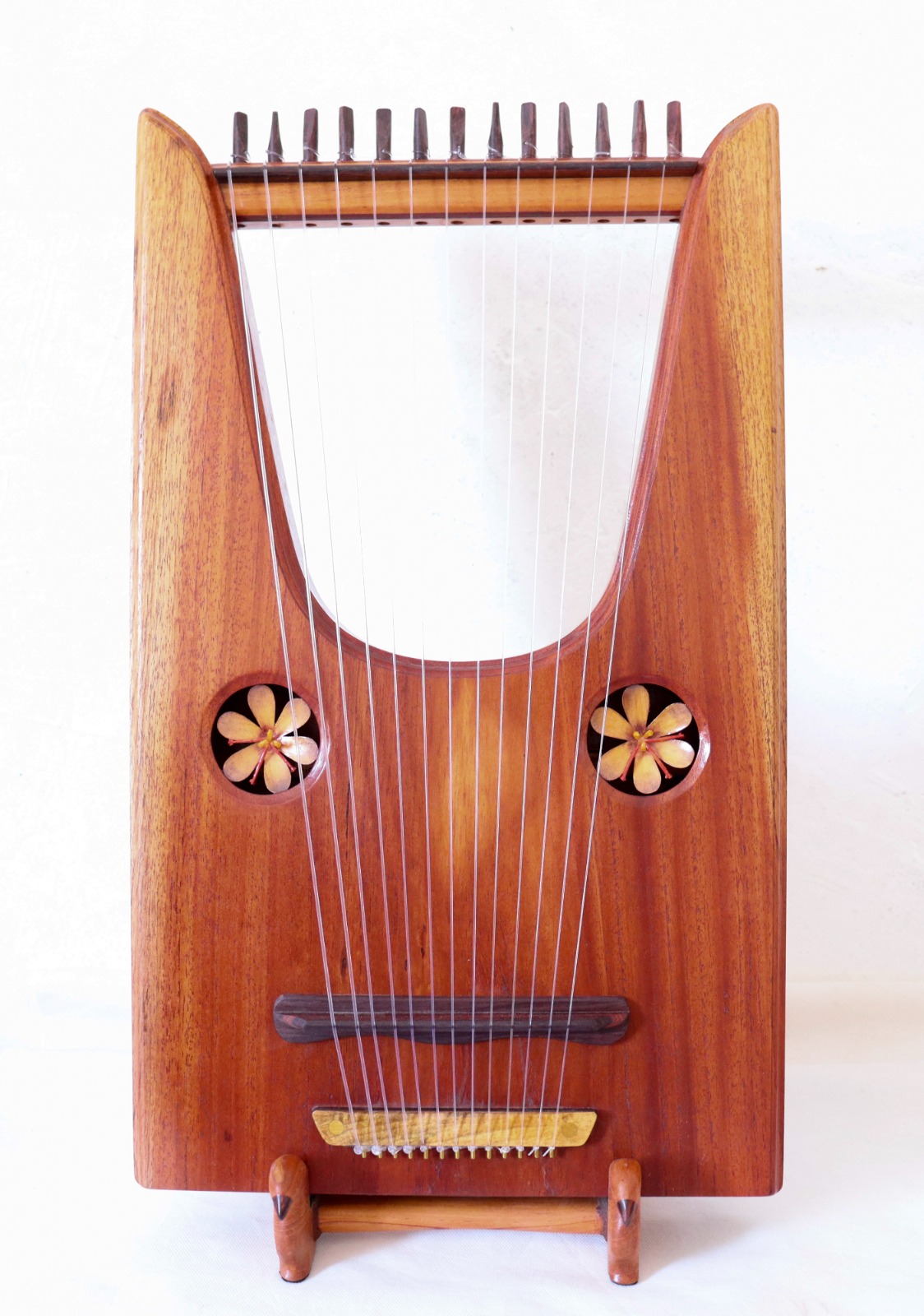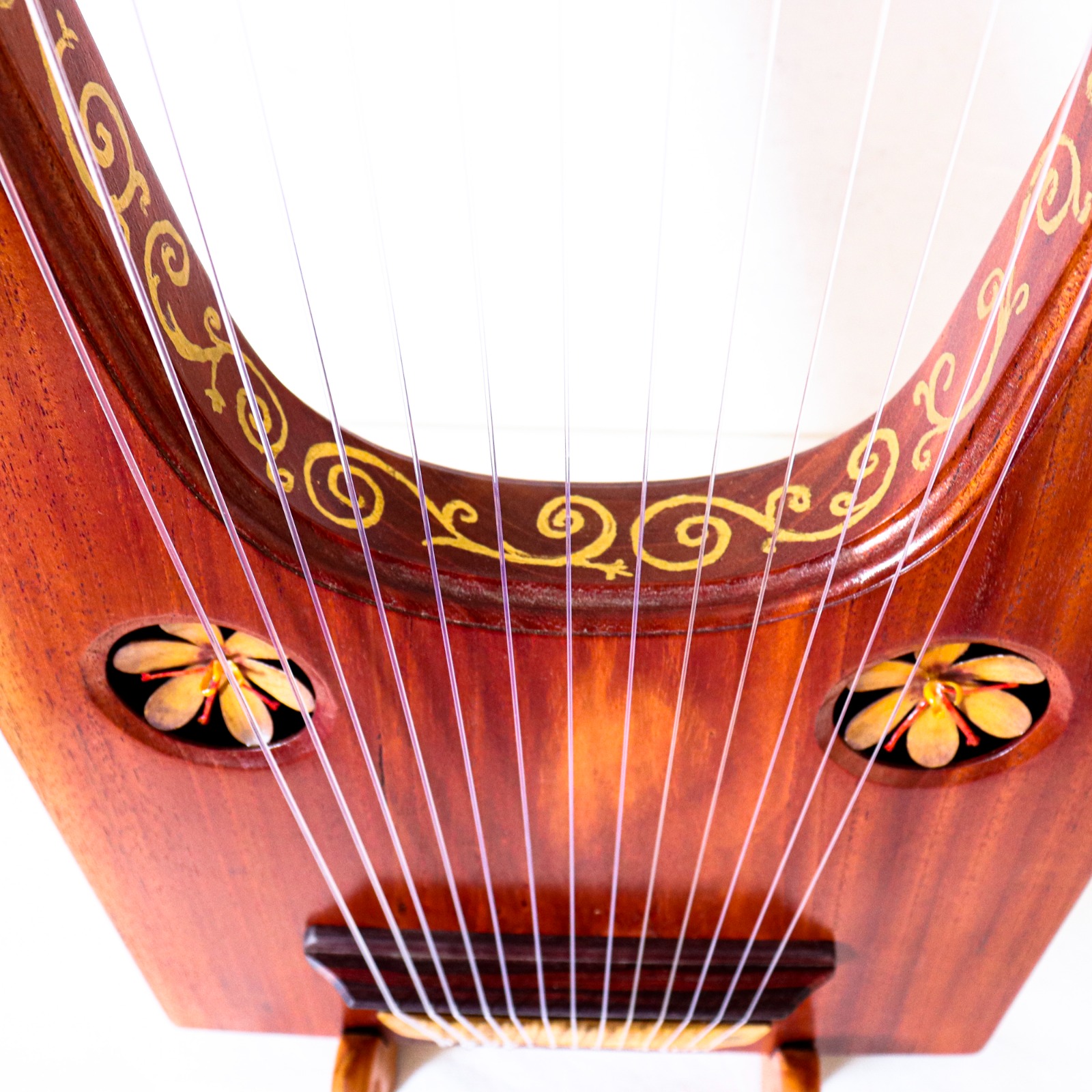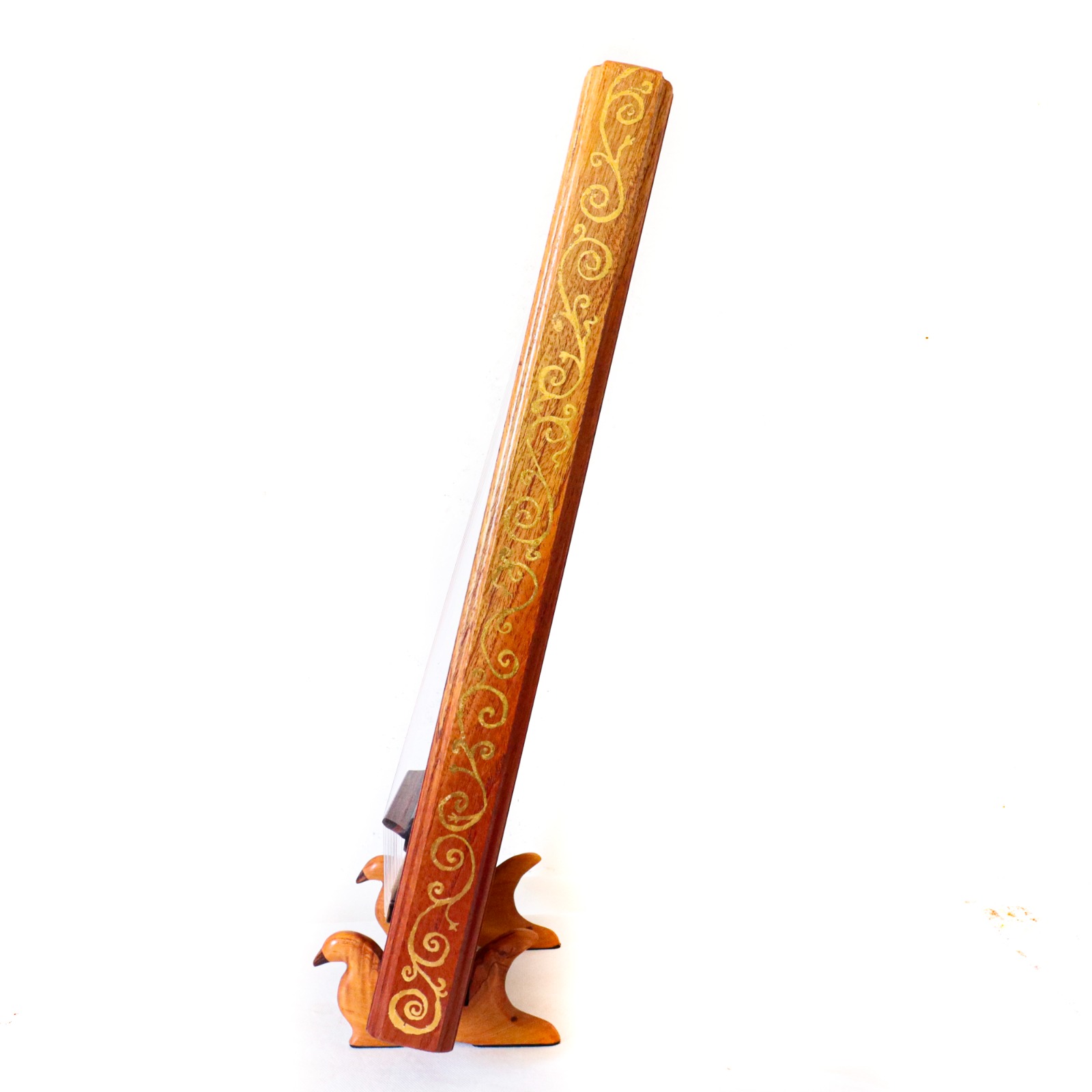Alright... It's been four months since this message, and I wanted to respond to it with what I was working on at that time.
So, first thing: here's a little something I recorded and posted on Youtube. It was just a recording experiment and far from my most complex performance (I can play Lina Palera's Seikilos Epitaph by now!), but it's something.
Now, properly responding to what you said...Last year when I visited Crete, saw the palaces and the archeological findings for myself, understood just how long-lived the lyre was an instrument and how diverse they were across multiple cultures...
Well, to put it simply, I understood that the current lyre designs that have been uncovered can only be an extremely narrow representation of reality. With the Mesopotamian lyres we even see these incredible, impressive instruments that were so impressively decorated, that no doubt they were one of a kind. At the same time the lyre is a rather rudimentary instrument in design, with the chelys lyre being made of simple natural materials, many of them leftover from food — animal hide, a turtle shell, horns, gut strings — so I even would go as far as saying that there might have been a lot of variability even between lyres of the same general type.
In the same way that only a tragically small number of ancient compositions survived to this day, what we found in murals, pottery and other artifacts can only be a small, thin slice of what the ancient civilizations had going on.
So, instead of trying to limit myself to what was clearly portrayed in archaeological findings, I tried a different experiment. I asked myself: "looking at what has been found of the Minoans, their preferred motifs and symbols, can I extrapolate and produce a design that could have been produced?" And, taking it a step further, can I make it embody a few more useful characteristics?
Now, since the whole purpose of the exercise was to extrapolate, I cannot ever say that its result would be an ancient or even a Greek lyre. It would be an original creation, at best inspired by ancient motifs, and if I had to attribute it a nationality I could only use mine. What Greek-ness it would have could only come from taking my experience with Greek lyres and using them as a basis. And, speaking more frankly, considering the Minoans were pre-Greek I don't think using their motifs would entitle it to being called a Greek instrument.
So, I set out to gather some Minoan motifs and weave them together with my own sensibilities as a lyre player. For instance, I decided that the deeper notes would be on the left, the higher ones on the right, which follows the same arrangement used by Greek lyremakers. It would be designed to be playable with both hands, which is absolutely mandatory for Greek lyres but often disregarded in some of the cheaper lyres on Amazon. It would either use widely available fishing line as strings or nylgut, sugarcane or gut strings — no metal strings. It would be designed so that harmonics are possible. Tuning should be easy. It would have to be structurally robust, portable and easy to carry — this is an instrument meant to be carried around and played outside.
Now, when I mentioned "a few more useful characteristics"... The lyre, as I said, is a rather rudimentary instrument. But if you look online you will find that generally they are either cheap Donner lyres of questionable quality or expensive Luthieros ones. There are other lyremakers, but they aren't so easy to find and their prices can also be very high. Suffice it to say, there is no middle ground.
Now, I decided that I wanted a lyre which, by virtue of its design, should be cheap and easy to produce. In case I put it on the game, I know that there will be people who want to get a similar one, so I didn't want it to be some luxury good that few can afford. I want it to create joy, and being accessible is crucial.
And, of course, I set out to use Minoan motifs. That was the easiest part: a visit to the Palace of Knossos showed me exactly what I needed.

The horns of consecration as they are known are a recurring motif in Minoan architecture and art. It was all over in the palaces, art and even in their tombs.

This symbol was immensely important to them and all over the place.
And it just so happens to be perfect as a basis for a lyre. The horns can function as arms, the base can be lengthened to become a sound box, a length of wood at the top becomes a cross bar. The base is flat so it can even stand on its own! And if the horns are hollow they can act as extensions of the soundbox. If the surface is kept flat that would also make it far cheaper and easier to produce than the traditional Greek lyres. And, to top it off, I decided to base its dimensions around those of a standard cabin carry-on luggage, so that people could easily take it with them on trips no matter what transportation they took.
I can't be so bold as to say that what I came up with must have existed at some point in time. But I think the experiment has been a success so far. Here's the result.




It hasn't arrived yet. I haven't had the chance to hear what it sounds like. But damn I'm happy with the results already. This baby packs 13 strings — you won't find a Luthieros lyre with this number for less than a thousand Euros, while this one cost less than 400USD. The flowers are Cretan crocuses and the paint on the sides is gold leaf, and even with those bits of extravagance it still came at that price. The wood is cedar.
Once it arrives I plan on recording the same song with it and my main lyre, to see how they compare. I'll post it here, and I'll probably make a devlog about it all once it's in my hands.

